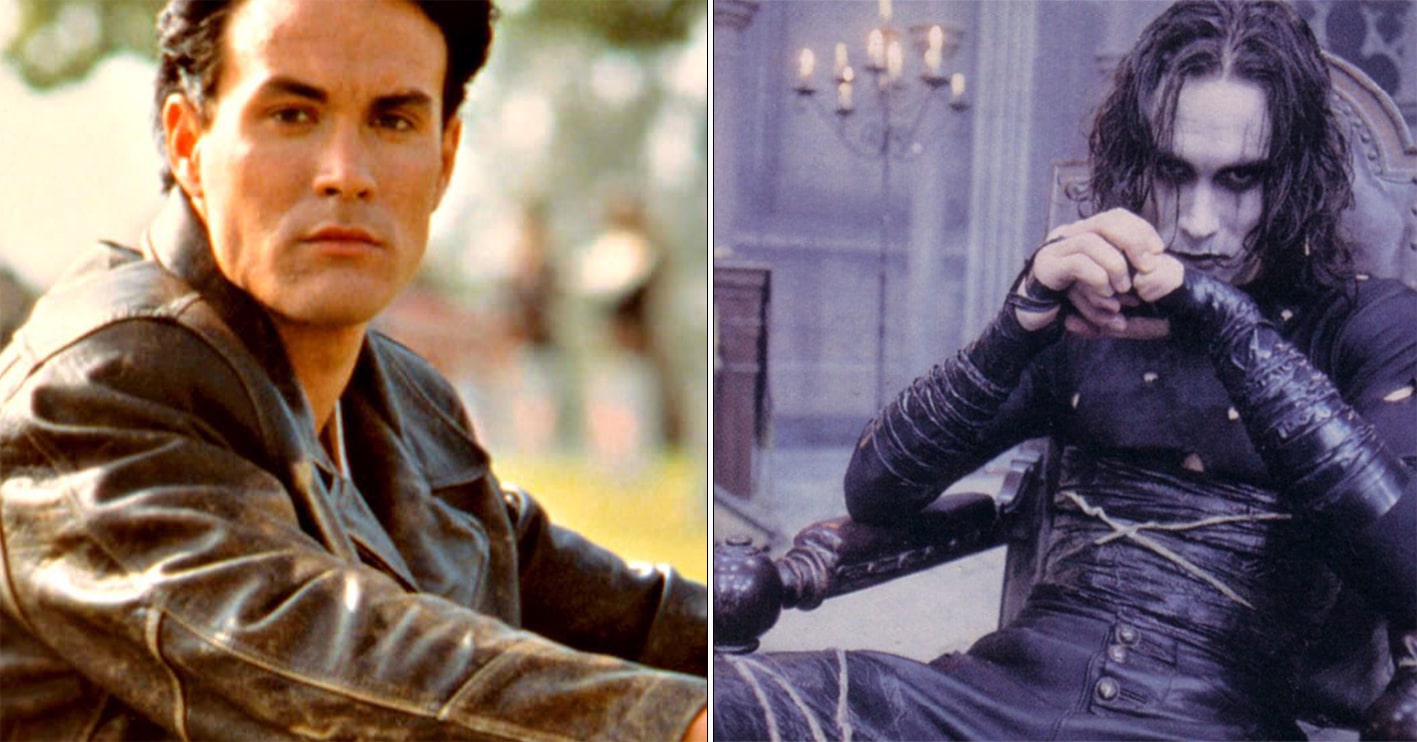Few Hollywood tragedies have hit so hard as the death of Brandon Lee. He was an up-and-coming young star, killed in an ammunition accident while making what should have been his breakthrough movie, The Crow.
What happened on the set of the comic book adaptation shocked the world, and had a serious impact on the entertainment industry as a whole. Worse yet, it stole the life of a talented man who seemed just on the brink of realising his potential.
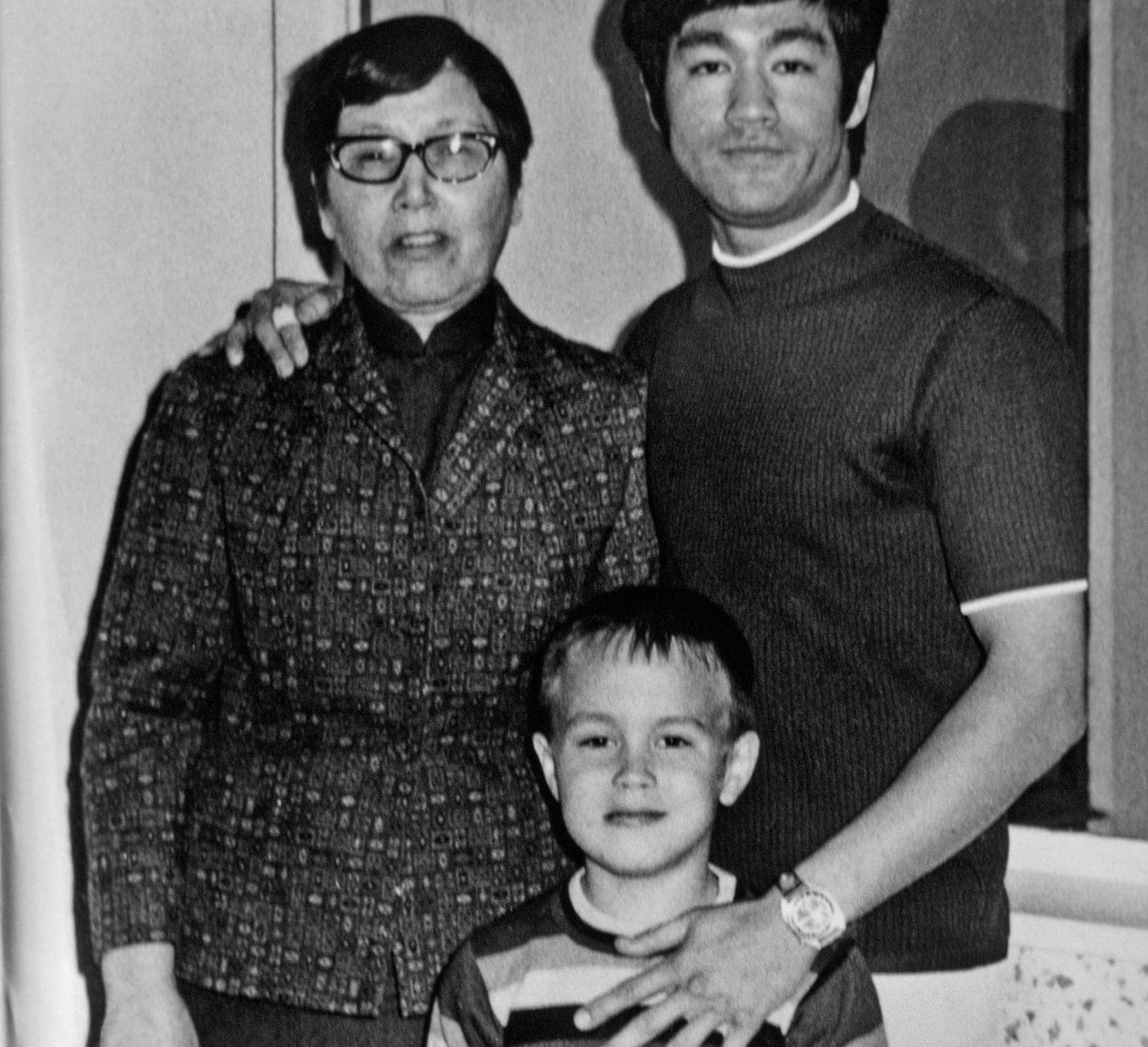
He was what many would refer to as Hollywood royalty. Born February 1 1965, Brandon Lee was the son of Bruce Lee, an actor and skilled martial artist from Hong Kong, and Linda Lee Caldwell, a teacher from the state of Washington. Not long after Brandon was born, his father rose to fame on TV series The Green Hornet, which paved the way to him becoming the first Asian actor to achieve movie star status in the US.
By the early 1970s, Bruce Lee was at the forefront of the kung fu movie boom, which was taken to another level by 1973’s Enter the Dragon. Tragically, while the film did indeed prove a huge hit, Lee was not there to see it happen. Only six days before Enter the Dragon premiered in July 1973, Bruce Lee died suddenly of a cerebral edema. Brandon was eight at the time.
In death, Bruce Lee became an even greater cultural icon than he had been in life. Brandon ultimately decided to follow in his father’s footsteps, pursuing martial arts (including kung fu, Muay Thai and the system devised by his father, Jeet Kune Do) as well as acting: he took classes at New York’s Lee Strasberg Institute, and majored in theatre at Emerson College, Boston.

When Brandon headed to Hollywood for work, it wasn’t long before casting agents took interest. Not only was he the son of a legend, he was a handsome, athletic and magnetic presence in his own right. Nonetheless, his earliest roles tied in closely with his family heritage. He made his screen debut opposite David Carradine in 1986’s Kung Fu: The Movie, a spin-off of the hit 70s TV show (which, perhaps ironically, had originally been developed with Bruce Lee in mind for the lead).
Lee reprised his role in the pilot for a proposed spin-off series, Kung Fu: The Next Generation, but no series materialised. It’s also reported that around this time, Stan Lee of Marvel Comics met with the actor to discuss the possibility of him portraying Marvel’s Master of Kung Fu, Shang-Chi (a character who ultimately wouldn’t make it to screens until 2021, portrayed by Simu Liu).
Lee took his first steps into film acting with 1986 Hong Kong production Legacy of Rage (which was met with some acclaim) and 1989 German production Laser Mission (which wasn’t). He would make his Hollywood debut opposite Dolph Lundgren in 1991 action comedy Showdown in Little Tokyo, a badly-reviewed box office flop which has since attained cult status.
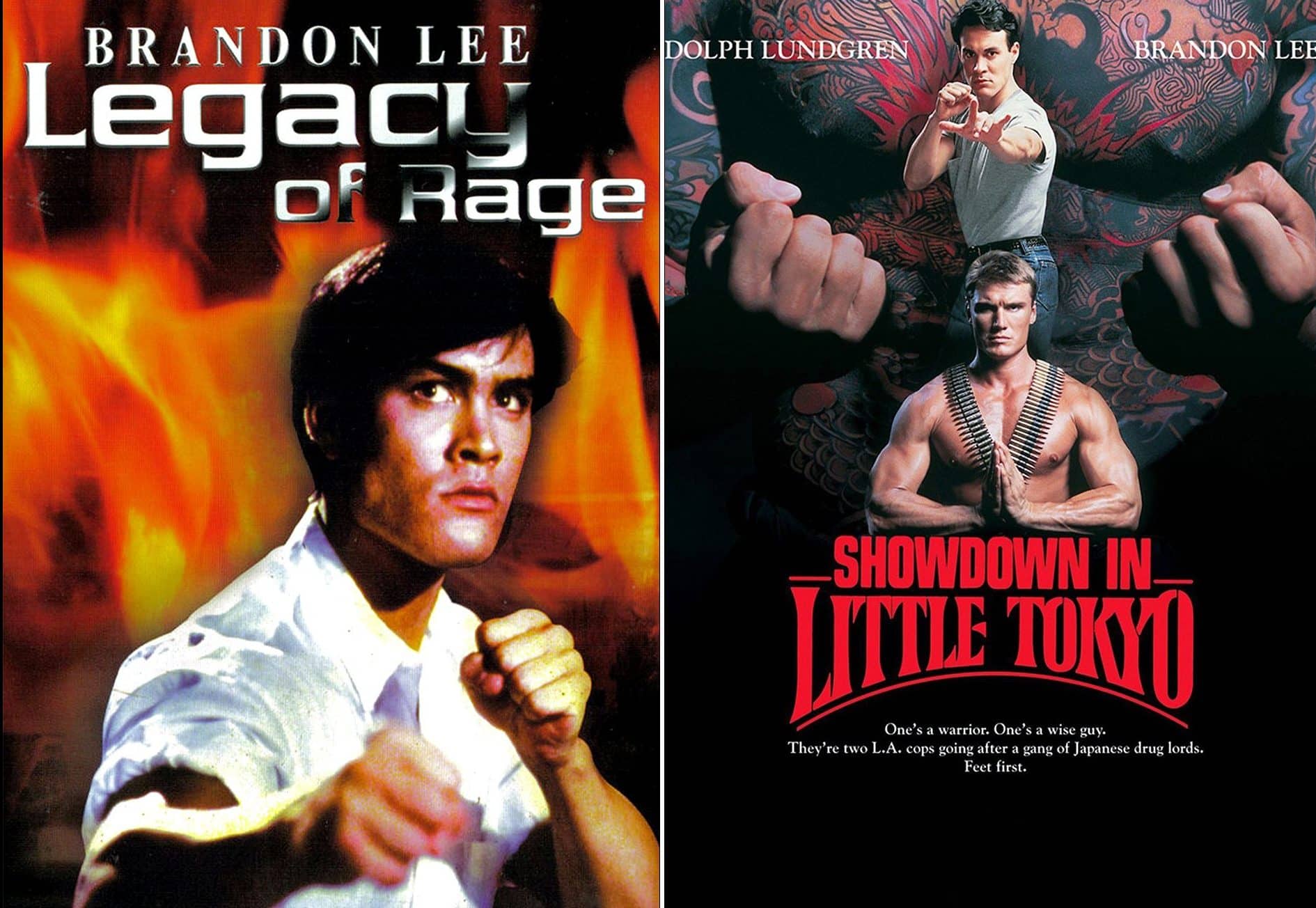
Soon thereafter, Lee was under consideration to play his own father in biopic Dragon: The Bruce Lee Story. Lee himself was said to have been uncomfortable with this idea, and it was also deemed inappropriate as the mixed-race son didn’t have his father’s Asian looks. The role instead went to the unrelated Jason Scott Lee, with Brandon serving as a consultant on the film.
Brandon’s first major leading role came in 1992 action thriller Rapid Fire, which proved a moderate success. Even critics that didn’t like the film recognised Lee’s innate charisma. A buzz started building around the actor, who was hotly tipped to become the next big action star. Early in development on Mortal Kombat, Lee was tipped to star; another script developed with Lee in mind was later reworked into Die Hard with a Vengeance.
Then Lee was cast in The Crow, an adaptation of James O’Barr’s comic book. A dark tale of grief and revenge, the story centres on Eric Draven, a slain rock musician who returns from the grave one year after he and his girlfriend were murdered, and sets out to kill those responsible.
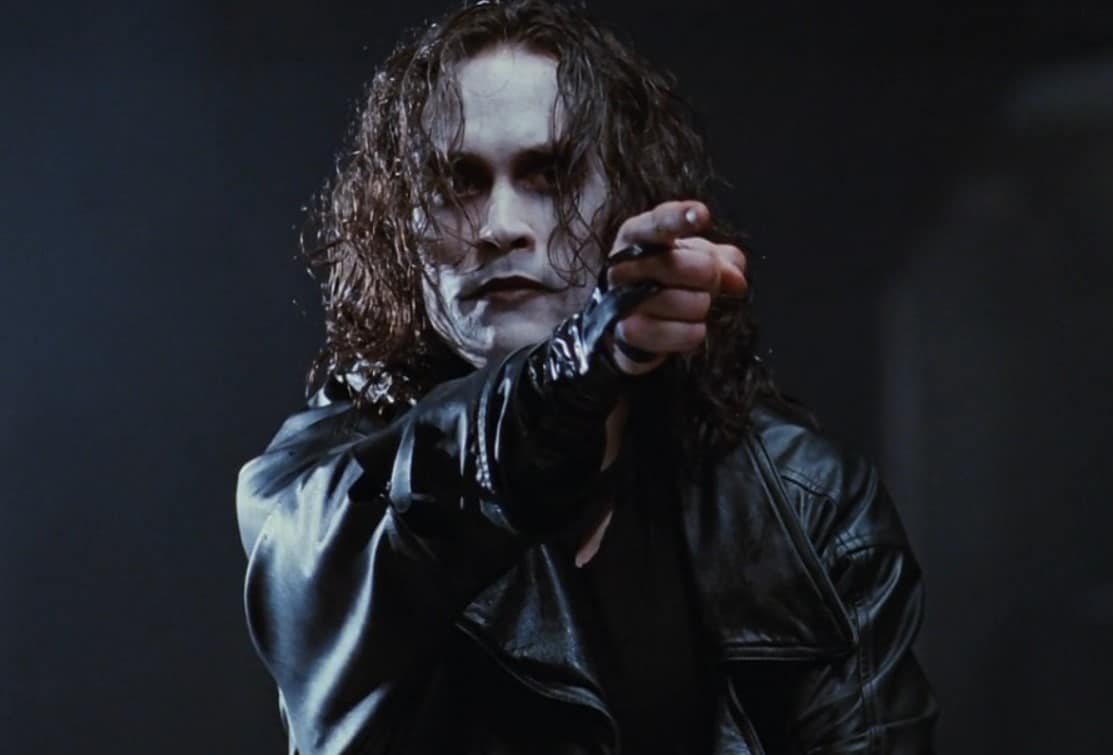
Lee had expressed disappointment in some of his earlier films, and was thrilled to finally land a project with more substance. He threw himself into The Crow, losing weight and growing his hair to fit the character, and dialling back his martial arts prowess to present a grittier, more grounded avenger than his previous roles.
Made on a relatively low budget of $15 million, The Crow proved a fairly arduous production, with a number of minor accidents and uncomfortable conditions. Despite this, Lee is said to have impressed everyone with his steadfast dedication, and by the end of March 1993 the actor had completed almost all his scenes for the film.
Then, on March 31st, the time came to shoot the scene depicting Eric Draven’s death. As rehearsed, Lee fell to the ground when a prop gun was fired in his direction – but he didn’t get up again when the director called “cut.” Upon realising Lee had somehow been shot for real, the crew took the actor to hospital where he was rushed into surgery, but he died of his injuries. Lee was 28 years old.

A thorough investigation ensued, and it was discovered that although the gun in question had been loaded with blanks, the barrel of the gun had not been cleaned, and contained remnants of a round fired earlier. The force of the blank sent this debris flying from the gun with the equivalent force of an actual bullet into Lee’s abdomen.
In the wake of this tragedy, production on The Crow was put on hold, and for a time the producers considered abandoning the film altogether. The cast and crew were naturally reluctant to return – not least Funboy actor Michael Massee, who had pulled the trigger on what he had been told was an entirely safe prop gun.
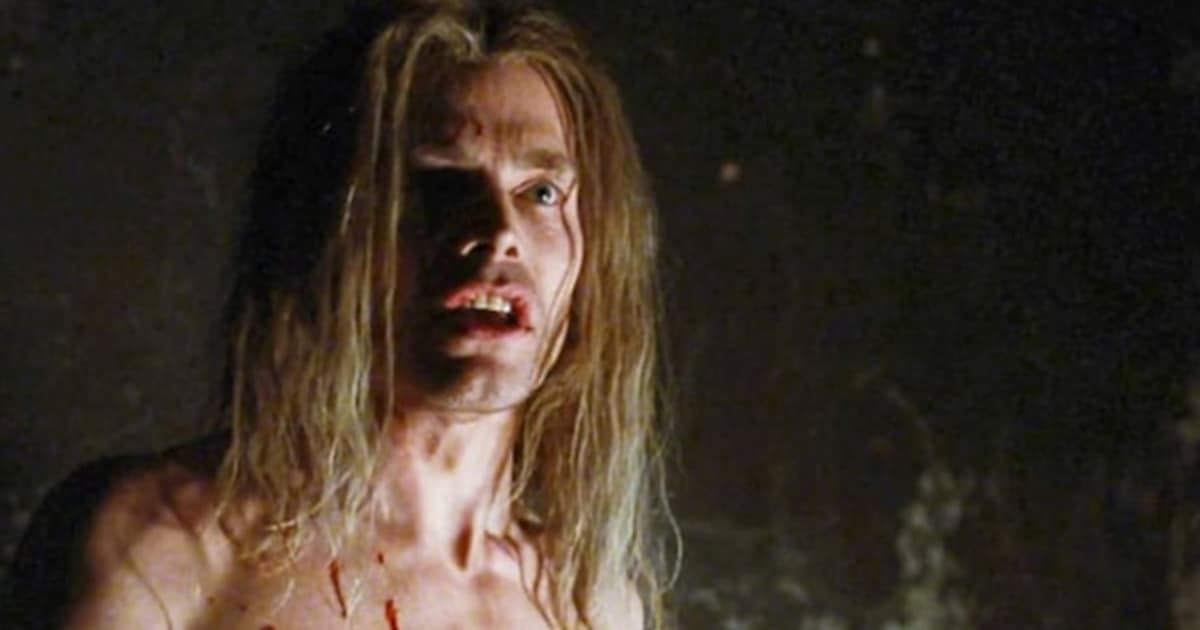
Massee was left deeply disturbed by the accident. Innocent of any crime, he took a year off acting and refused to see the film on its release in 1994. 12 years on from the tragedy, he told a journalist that he still suffered nightmares, remarking, “I don’t think you ever get over something like that.” (Massee passed away aged 64 in 2016, from stomach cancer.)
However, the film had been very close to completing principal photography. With the blessing of Lee’s bereaved family and his fiancée Eliza Hutton, production on The Crow continued. With almost all of Lee’s scenes finished, rewrites were made to the remaining scenes, and Lee’s friend and stunt double Chad Stahelski (now best known as the director of the John Wick movies) stood in for the actor. On some shots, CGI was used to recreate Lee’s likeness.
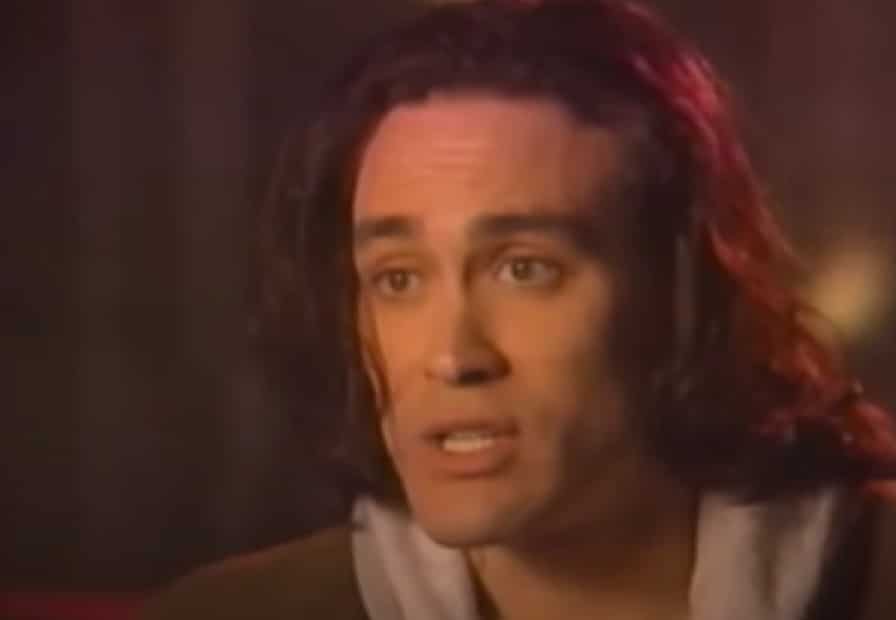
It didn’t take long for conspiracy theories to gain prominence. To some, the fact that Brandon Lee was shot dead whilst filming his actual death scene in a movie about a man who returns from the grave seemed too eerie to be coincidental. This notion seemed to be lent credence by the clear echoes of his father’s similarly untimely passing, with Bruce having died whilst working on Game of Death – a film that centres on an actor who fakes his own death.
Then there was the notion that an actual curse surrounded the Lee family, targeting its males. It has been claimed that Bruce Lee was at birth given the feminine name Lee Jun-Fan in the hopes that this would allow him to escape his very literal demons. Scenes in biopic Dragon: the Bruce Lee Story (released May 1993, barely a month after Brandon’s death) suggest this was something Bruce himself strongly believed.
With all these lurid stories doing the rounds, there were naturally fears that releasing The Crow at all would be in bad taste. However, once the film finally hit cinemas in May 1994, it was on the whole warmly received, with many considering it a fitting tribute to its lost leading man. It soon became a cult classic.

The Crow’s successful completion paved the way for later films that were finished after the deaths of lead actors, most famously Fast & Furious 7, which used similar techniques to replicate the late Paul Walker. More significantly, Brandon Lee’s death prompted an industry-wide rethink to the way firearms were approached on film sets, with far stricter safety measures introduced to ensure no such accident could occur again.
Tragically, the death of cinematographer Hayla Hutchins on the set of Rust in October 2021 demonstrated that the use of guns on film sets is still not without risk. For this reason, many have argued that any use of realistic guns, replica or not, should be banned on movie sets: Dwayne Johnson, for one, has pledged to only allow non-functioning rubber replicas on his films going forward.
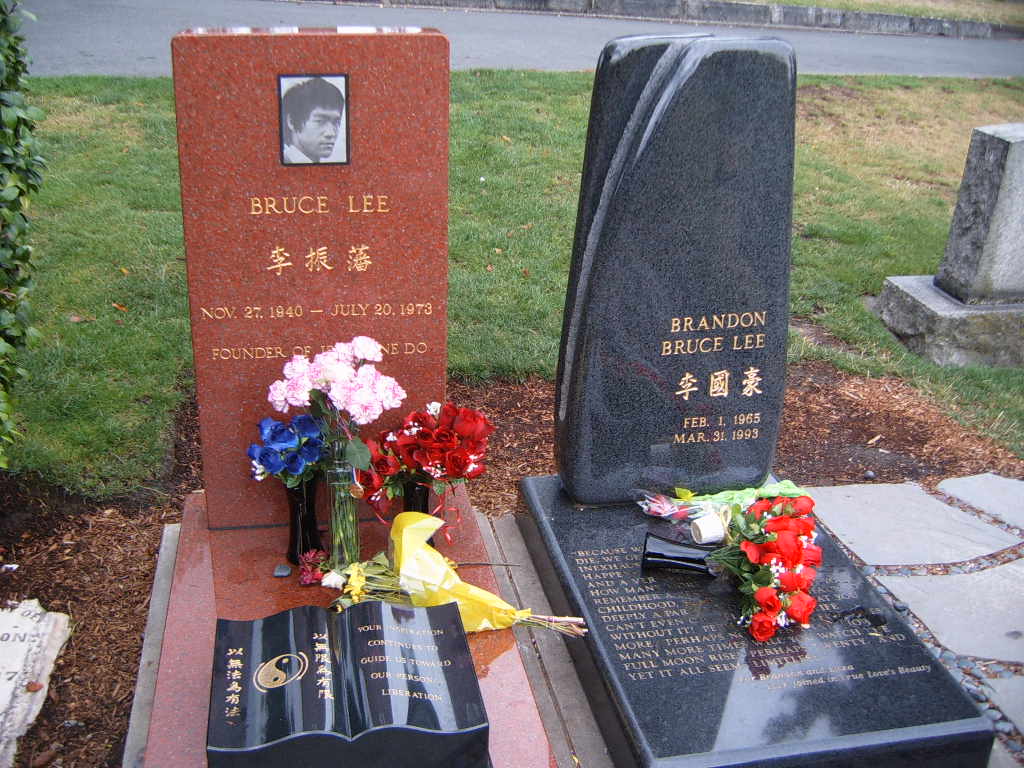
Brandon Lee was buried alongside his father at Lake View Cemetery in Seattle. Inscribed on his headstone is a passage from the novel The Sheltering Sky, which the actor had recited in his last filmed interview on the set of The Crow: “Because we don’t know when we will die, we get to think of life as an inexhaustible well. And yet everything happens only a certain number of times, and a very small number really.
“How many more times will you remember a certain afternoon of your childhood, an afternoon that is so deeply a part of your being that you can’t even conceive of your life without it? Perhaps four, or five times more? Perhaps not even that. How many more times will you watch the full moon rise? Perhaps twenty. And yet it all seems limitless.”

